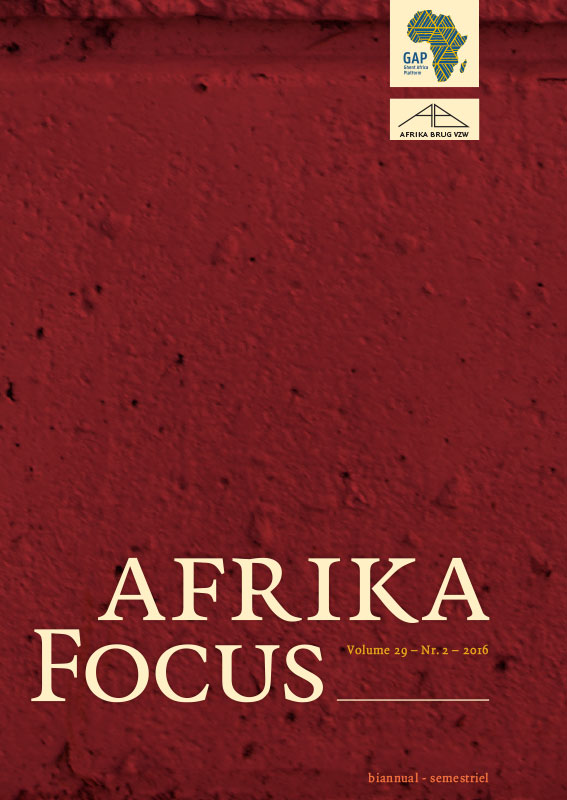Ephemeral stream dynamics, land cover changes and climate variability in the marginal grabens of the northern Ethiopian Rift Valley
DOI:
https://doi.org/10.21825/af.v29i2.4848Abstract
This study focused on ephemeral streams morphodynamics and their relation with hydro-climatic and bio-physical characteristics in their headwater and graben floors in the marginal grabens along the northern Ethiopian Rift Valley. The Raya graben was taken as a case study area, which is the largest marginal graben in northern Ethiopia. The link between rainfall variability and land cover changes shows that there was a negative correlation between precipitation and deforestation which implies that an increase in precipitation decreases deforestation deterring the peasants from tree cutting. Regarding the relationship between upper catchment characteristics and river morphology, results show that upper catchment area is the most important controlling factor of the length of and the area occupied by the rivers in the graben bottom. A simple hydraulic analysis based on the change of specific discharge as the river ow approaches the bridges demonstrates that the abrupt change in channel width as the river approaches the bridge is the main cause of the thick deposition and, consequently, of the increased frequency of overbank oods upstream of the road bridges in the study area. The results related to channel bank erosion capacity of ash oods show that all the peak discharges were equally important in triggering channel bank erosion. Concomitantly, vegetated channels are much more resist- ant to channel bank erosion than non-vegetated banks. Land changes in graben bottoms dictate that the changes are not simply related to a distributary river system but that human interven- tion (e.g., the conversion of bushland and forests into cropland, settlement on alluvium, and avoidance of losing farmland to other land units) and natural vegetation regeneration (e.g., alluvial deposits into shrubland) are also important. Overall, the study suggests that to control the morphodynamics of the ephemeral rivers and their impact on farming activities in the gra- ben bottom, catchment rehabilitation activities need to focus both on the upper catchment and the river channels in the graben bottom. Key words: ephemeral streams, land change, graben, Rift Valley, land cover, climate variabilityDownloads
Published
How to Cite
Issue
Section
License
Authors who publish with this journal agree to the following terms
Authors retain copyright and grant the journal right of first publication with the work simultaneously licensed under a Creative Commons Attribution License that allows others to share the work with an acknowledgement of the work's authorship and initial publication in this journal.
Authors are able to enter into separate, additional contractual arrangements for the non-exclusive distribution of the journal's published version of the work (e.g., post it to an institutional repository or publish it in a book), with an acknowledgement of its initial publication in this journal.
Authors are permitted and encouraged to post their work online (e.g., in institutional repositories or on their website) prior to and during the submission process, as it can lead to productive exchanges, as well as earlier and greater citation of published work (See The Effect of Open Access).


